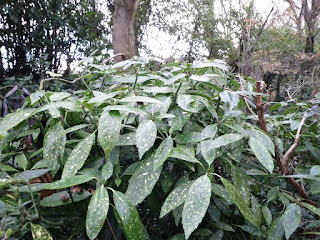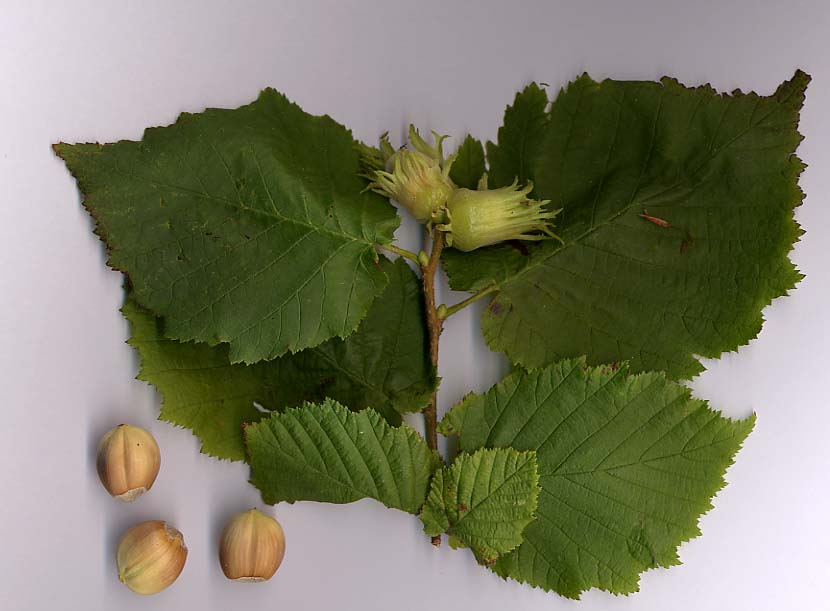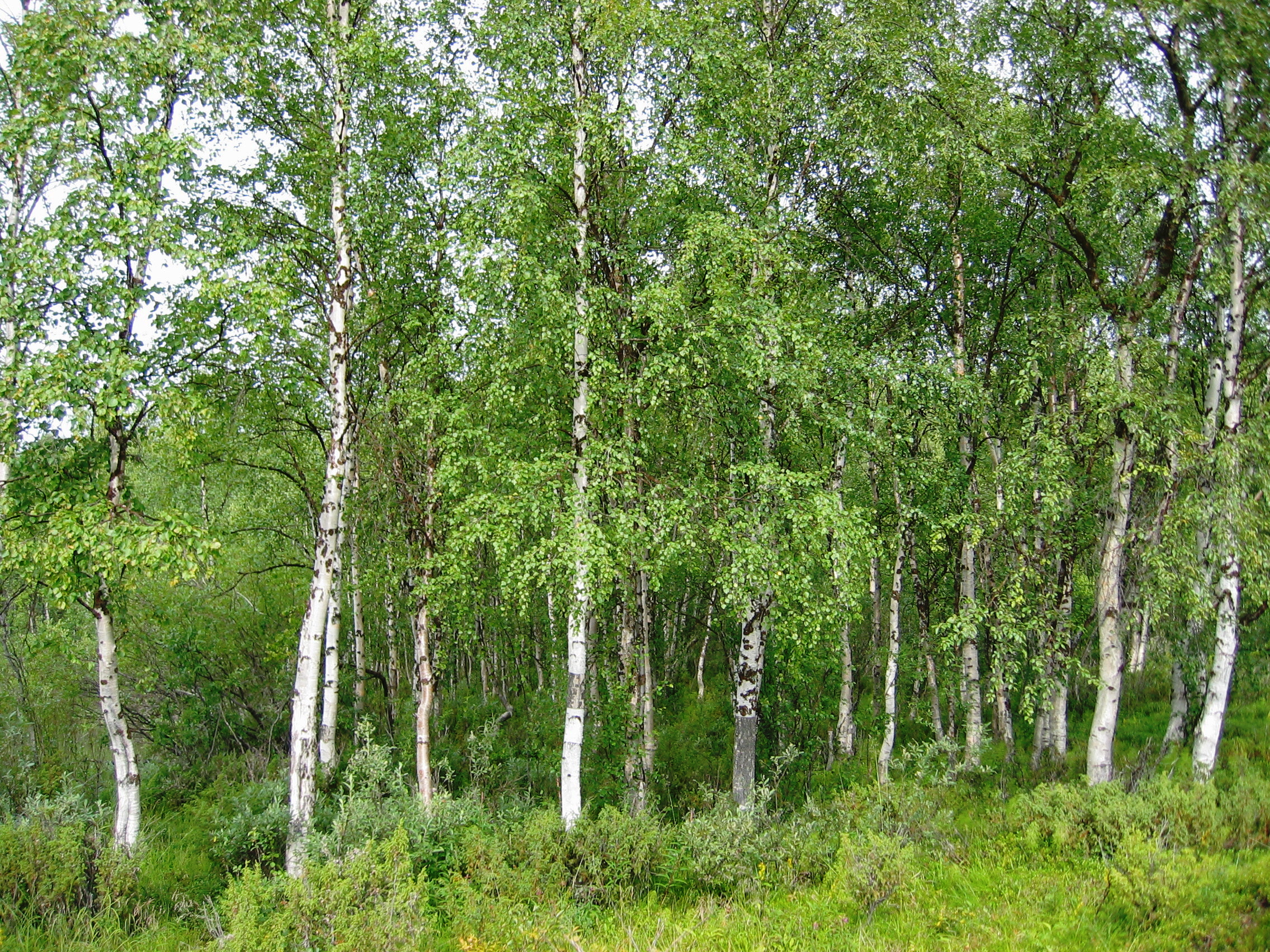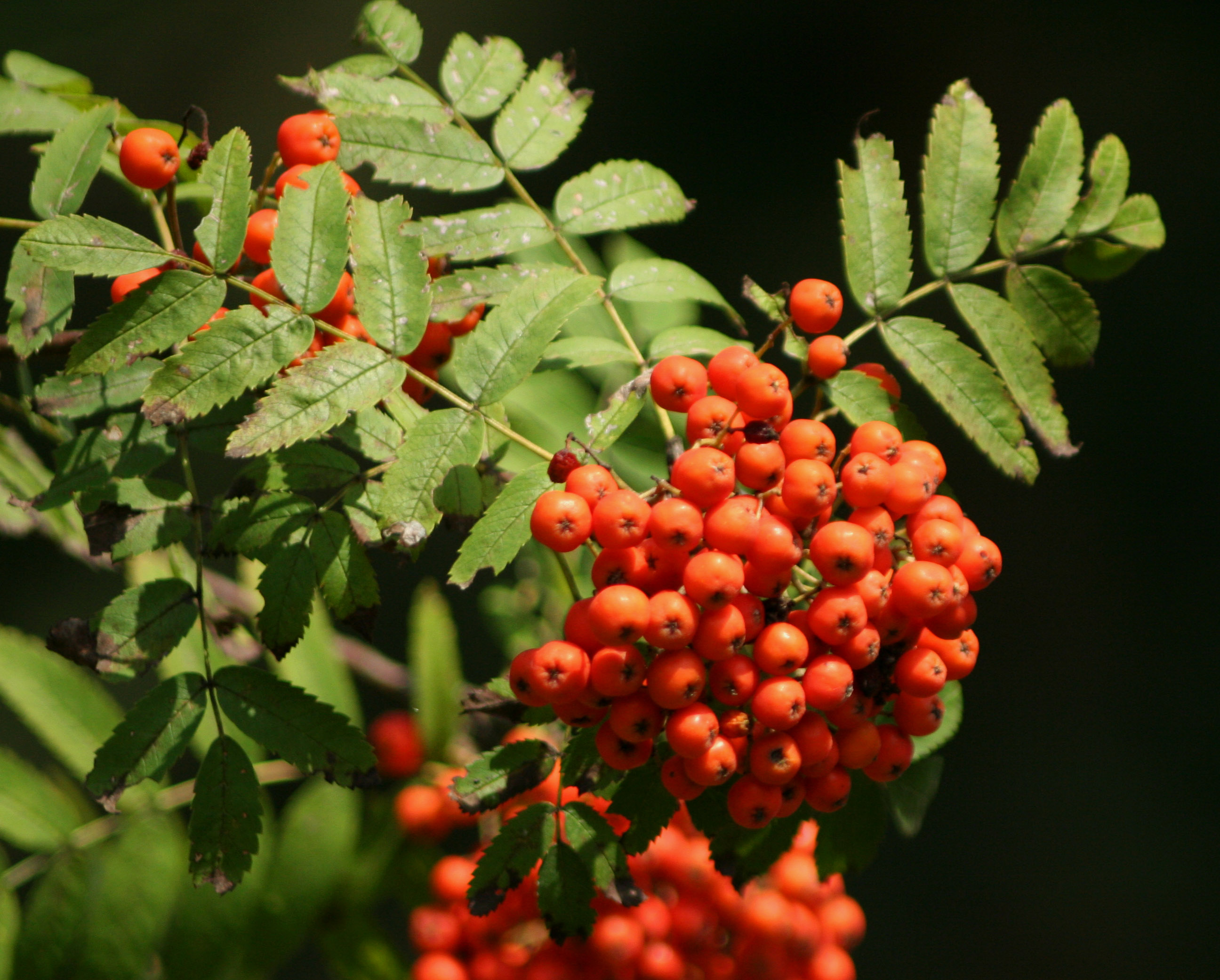Second part of the first batch of plants to learn.
Viburnum opulus - guelder rose
A large deciduous shrub with white flowers followed by bright red berries. Leaves turn red in the autumn and take their time to fall.
Size: 5x4 m
Cultivation notes:
Shrub; plant November to March, mulch well, water in drought.
Corylus avellana - hazel
 |
C. avellana 'Contorta'.
Note the typical green buds midst of winter. |
A small, many-stemmed native tree used for coppicing and nuts. Can give a good autumn colour in a sheltered spot. Yellow "Lamb's tails" catkins in late winter or early spring.
Size: 5x5 m
Cultivation notes:
Tree; plant in a hole 1.5 times the size of the root ball, incorporate organic matter, support and mulch well. Keep well watered until established.
Ilex aquifolium - holly
An evergreen native tree with very distinctive shiny foliage. Makes an excellent slow-growing hedge, also in coastal areas, but will grow to an impressive tree if given the chance.
*RHS award of garden merit
Size: up to 25x8 m
Cultivation notes:
Tree; plant in a hole 1.5 times the size of the root ball, incorporate organic matter, support and mulch well. Keep well watered until established.
The holly is dioecious and most cultivars are either male of female. In order for a female plant to produce fruit, it must be pollinated by a male one, which you must have relatively close by (
I. aquifolium 'J. C. van Tol' is self pollinating and as such suitable for a small garden).
Betula pendula - silver or common birch
A native tree with a high wildlife value and typically yellow autumn colour. Makes for a good pioneer plant, also in light shade, and is thus much-used in new apartment blocks' courtyards.
*RHS award of garden merit
Size: up to 25x10 m
Cultivation notes:
Tree; plant in a hole 1.5 times the size of the root ball, incorporate organic matter, support and mulch well. Keep well watered until established.
Personal note: I got married in a grove of birch trees. :)
Sorbus aucuparia - mountain ash
A compact tree with spring flowers and ferny foliage, which turns various shades of red in the autumn. The autumn bunches of red berries are much liked by a number of garden birds.
Size: up to 15x7 m
Cultivation notes:
Tree; plant in a hole 1.5 times the size of the root ball, incorporate organic matter, support and mulch well. Keep well watered until established.
Personal note: the rowan is the only significantly flowering and fruit-bearing tree in Northern Finland, and so particularly special.
Observation:
S. aucuparia is a wonderful tree, but currently rather overused as a street tree.
Ulex europaeus - gorse, furze
A viciously spiny shrub with yellow, almond-scented flowers. Does very well on exposed seaside locations.
Size: up to 2.5 x 2 m
Cultivation notes:
Shrub; plant November to March, mulch well, water in drought.
Plant in poor soil in full sun; can become leggy in rich soil.
Alnus glutinosa - common or black alder
A very hardy native tree with pear-shaped glossy leaves that stay on late into the winter. Produces catkins amongst the first trees in the spring (with very allergenic pollen).
Size:25x10 m
Cultivation notes:
Tree; plant in a hole 1.5 times the size of the root ball, incorporate organic matter, support and mulch well. Keep well watered until established.
Prunus insititia - wild damson
A thorny native tree with edible fruit. White blossom in the spring
Size: 5x5m
Cultivation notes:
Tree; plant in a hole 1.5 times the size of the root ball, incorporate organic matter, support and mulch well. Keep well watered until established.
Note: not included in Brickell (1996) either as
P. insititia or
P. domestica ssp.
insititia.
Historical note: This forebear of modern plums has been enjoyed since antiquity. Quoth
Wikipedia:
"The name damson derives from the Latin prunum damascenum, "plum of Damascus". Damsons were first cultivated in antiquity in the area around the ancient city of Damascus, capital of modern-day Syria, and were introduced into England by the Romans. Remnants of damsons are often found during archaeological digs of ancient Roman camps across England, and ancient writings describe the use of damson skins in the manufacture of purple dye. Prugne damaschine figure in the long list of comestibles enjoyed by the Milanese given by Bonvesin de la Riva in his Marvels of Milan (1288)."
Tilia x europaea - European lime
A very popular park and street tree often used for
pleaching. Foliage turns yellow in the autumn.
Size: 35x15 m
Cultivation notes:
Tree; plant in a hole 1.5 times the size of the root ball, incorporate organic matter, support and mulch well. Keep well watered until established.
 |
A row of lime trees in December, showing the pleasing
red of younger shoots. |
























 Unfortunately I wasn't really thinking about immortalising the... dead... worms... Er. Anyway no pictures of the disaster, had other things on my mind at the time, imagine that. Here's what they have now, though. The sheet of newspaper gives the little helpers somewhere to escape if things are still too wet. The stuff that looks like sawdust is bokashi bran that came with the wormery; it in theory has lots of micro-organisms that will help getting decomposition started again.
Unfortunately I wasn't really thinking about immortalising the... dead... worms... Er. Anyway no pictures of the disaster, had other things on my mind at the time, imagine that. Here's what they have now, though. The sheet of newspaper gives the little helpers somewhere to escape if things are still too wet. The stuff that looks like sawdust is bokashi bran that came with the wormery; it in theory has lots of micro-organisms that will help getting decomposition started again.





























+5.jpg)

